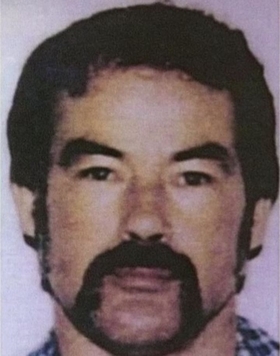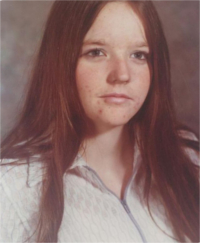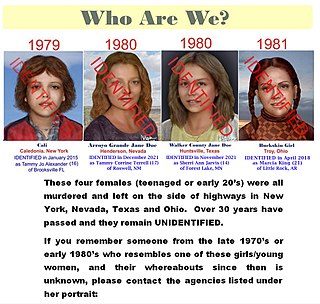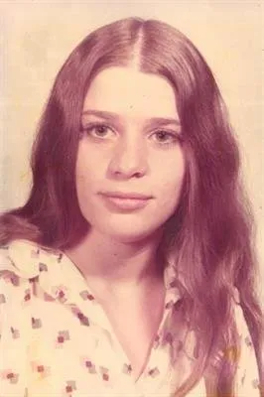This is a timeline of major crimes in Australia.

Forensic Investigators: Australia's True Crimes is an Australian television show hosted by Lisa McCune which aired on the Seven Network. It aired for three seasons from 2004 to 2006.

Mr Cruel is the moniker for an unidentified Australian serial child rapist who attacked three girls in the northern and eastern suburbs of Melbourne, Victoria, in the late 1980s and early 1990s. He is also the prime suspect in the 1991 abduction and murder of a fourth girl, Karmein Chan. His moniker came from a headline in the Melbourne newspaper The Sun.
The Brighton trunk murders were two murders linked to Brighton, England, in 1934. In each, the body of a murdered woman was placed in a trunk. The murders are not believed to have any connection with each other aside from how they were carried out, and the first of the two victims remains unidentified; a suspect was arrested and tried for the second murder but was found not guilty.

Paul Charles Denyer is an Australian serial killer currently serving three consecutive sentences of life imprisonment with a non-parole period of 30 years for the murders of three young women in Melbourne, in 1993. Denyer became known in the media as the Frankston Serial Killer as his crimes occurred in the neighbouring suburbs of Frankston.
Joji Obara, born Kim Sung-jong is a Korean-Japanese serial rapist who raped between 150 and 400 women. He was charged with drugging, raping and killing an English woman, Lucie Blackman, in July 2000, the rape and manslaughter of an Australian woman, Carita Ridgway, and the rape of eight other women.

Christopher Bernard Wilder, also known as the Beauty Queen Killer and the Snapshot Killer, was an Australian-American serial killer who abducted at least twelve young women and girls, killing eight of them during a six-week, cross-country crime spree in the United States in early 1984. Wilder's series of murders began in Florida on February 26, 1984, and continued across the country through Texas, Oklahoma, Colorado, Nevada and California, with attempted abductions in Washington and New York. Wilder victimized attractive young women, most of whom he would entice by promising to take their pictures. After subduing them, he would torture and rape them before shooting, stabbing with a knife, or strangling them to death. Two or more of his victims were electrocuted using a makeshift electrical cord.

Ivan Robert Marko Milat, commonly referred to in media as the Backpacker Murderer, was an Australian serial killer who abducted, assaulted, robbed and murdered two men and five women in New South Wales between 1989 and 1992. His modus operandi was to approach backpackers along the Hume Highway under the guise of providing them transport to areas of southern New South Wales, then take his victims into the Belanglo State Forest where he would incapacitate and murder them. Milat is also suspected of having committed many other similar offences around Australia.

La ragazza dal pigiama giallo is a 1978 Italian giallo film directed by Flavio Mogherini, distributed internationally as The Pyjama Girl Case.
The Pyjama Girl Murder Case is a dramatised 1939 documentary film from director Rupert Kathner based on the murder of Linda Agostini.

Tammy Corrine Terrell was an American murder victim from Roswell, New Mexico. Her body was discovered on October 5, 1980, in Henderson, Nevada, and remained unidentified until December 2021. Her case has been the subject of extensive efforts by investigators and has been highlighted as inspiring other work to solve cold cases of unidentified murder victims.

Janice Marie Young was a formerly unidentified American girl who was pushed into the path of a moving vehicle on June 9, 1973.

Unidentified decedent, or unidentified person, is a corpse of a person whose identity cannot be established by police and medical examiners. In many cases, it is several years before the identities of some UIDs are found, while in some cases, they are never identified. A UID may remain unidentified due to lack of evidence as well as absence of personal identification such as a driver's license. Where the remains have deteriorated or been mutilated to the point that the body is not easily recognized, a UID's face may be reconstructed to show what they had looked like before death. UIDs are often referred to by the placeholder names "John Doe" or "Jane Doe". In a database maintained by the Ontario Provincial Police, 371 unidentified decedents were found between 1964 and 2015.
The Redhead murders is the media epithet used to refer to a series of unsolved homicides of redheaded females in the United States between October 1978 and 1992, believed to have been committed by an unidentified male serial killer. The murders believed to be related have occurred in states including Tennessee, Arkansas, Kentucky, Mississippi, Pennsylvania, and West Virginia. The murders may have continued until 1992. The victims, many remaining unidentified for years, were usually women with reddish hair, whose bodies were abandoned along major highways in the United States. Officials believe that the women were likely hitchhiking or may have engaged in prostitution.

Deanna Lee Criswell was an American girl from Washington state who was murdered by firearm at age 16 and remained unidentified for 27 years. Criswell's body was found on November 25, 1987, in Marana, Arizona, near Tucson. The Marana Police Department announced her identification on February 11, 2015, aided by the sophisticated technology of forensic facial reconstruction and DNA analysis, and by websites set up by amateurs to help identify missing and unidentified persons.

Carol Ann Cole was a 17-year-old American homicide victim whose body was discovered in early 1981 in Bellevue, Bossier Parish, Louisiana. The victim remained unidentified until 2015, when DNA tests confirmed her identity. Cole, native to Kalamazoo, Michigan, had been missing from San Antonio, Texas since 1980. Cole's killing remains unsolved, although the investigation is continuing.

Martha Marie Morrison was a 17-year-old American girl who was murdered in 1974, and whose remains went unidentified for over 40 years after their discovery.
Dr. No is the nickname given to a suspected American serial killer thought to be responsible for the murders of at least nine women and girls in Ohio, between 1981 and 1990. As victims, Dr. No primarily chose prostitutes working in parking lots and truck stops located alongside Interstate 71. There are suspicions that he committed three similar killings in New York, Illinois, and Pennsylvania, between 1986 and 1988.
Mary Ann McCarthy, born County Galway, Ireland in 1834, was an Irish orphan who fatally stabbed her husband Edward Young in Gulgong, New South Wales after he beat her with a horsewhip.

Linda Marie Pagano, formerly known as Strongsville Jane Doe, was an American murder victim from Akron, Ohio who was an unidentified decedent for 44 years. Following an argument with her stepfather on September 1, 1974, Pagano left her stepfather's apartment and was never seen again. On February 5, 1975, partial skeletal remains of a white female were found by three boys in a park in Strongsville, Ohio. After remaining unidentified, the bones were buried in an unmarked grave. Due to a clerical error, the bones were never entered into databases of unidentified decedents, and the case was largely forgotten about. In 2016, a college student doing genealogy research of her own family rediscovered the unidentified body. After posting about it online, the case gained the attention of Carl Koppelman, a forensic sketch artist. The new attention to the case led to a connection being made by the Akron police, and in June 2018 the remains were conclusively identified as Linda Pagano.













